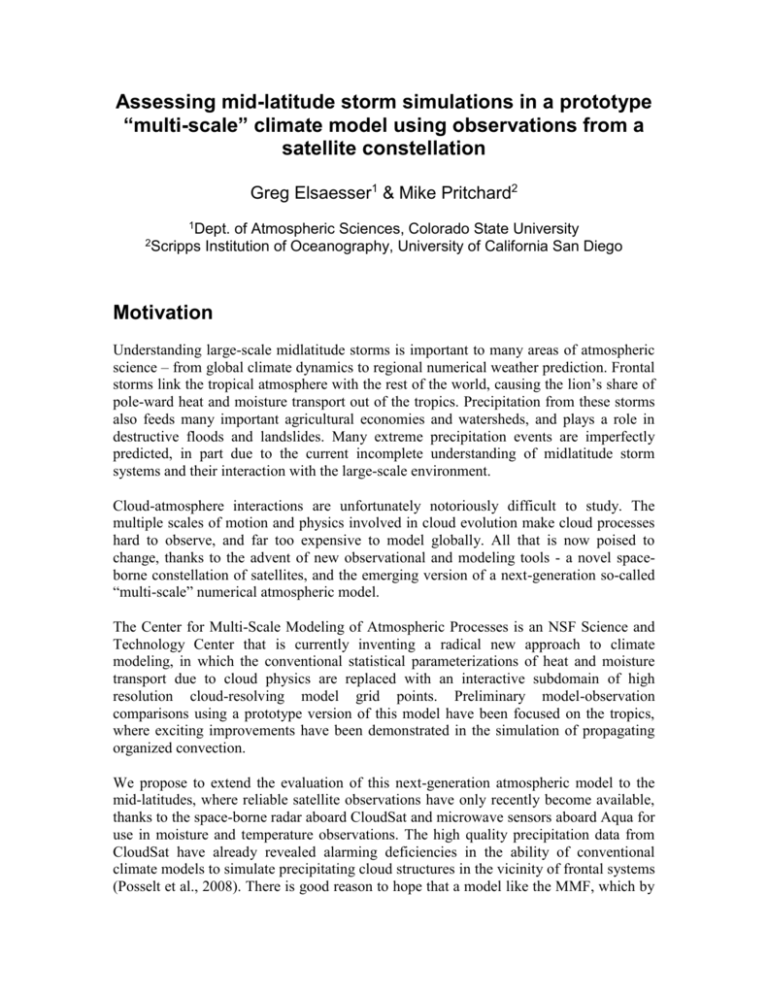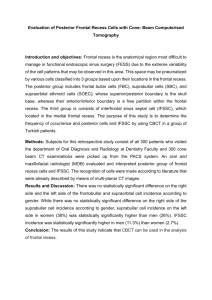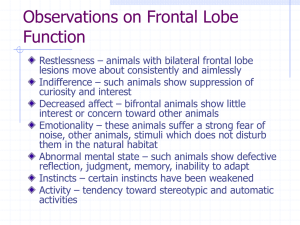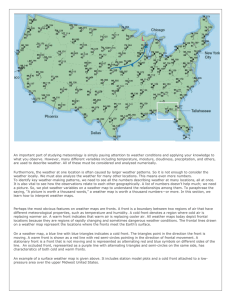Assessing mid-latitude storm simulations in a prototype
advertisement

Assessing mid-latitude storm simulations in a prototype “multi-scale” climate model using observations from a satellite constellation Greg Elsaesser1 & Mike Pritchard2 1Dept. 2Scripps of Atmospheric Sciences, Colorado State University Institution of Oceanography, University of California San Diego Motivation Understanding large-scale midlatitude storms is important to many areas of atmospheric science – from global climate dynamics to regional numerical weather prediction. Frontal storms link the tropical atmosphere with the rest of the world, causing the lion’s share of pole-ward heat and moisture transport out of the tropics. Precipitation from these storms also feeds many important agricultural economies and watersheds, and plays a role in destructive floods and landslides. Many extreme precipitation events are imperfectly predicted, in part due to the current incomplete understanding of midlatitude storm systems and their interaction with the large-scale environment. Cloud-atmosphere interactions are unfortunately notoriously difficult to study. The multiple scales of motion and physics involved in cloud evolution make cloud processes hard to observe, and far too expensive to model globally. All that is now poised to change, thanks to the advent of new observational and modeling tools - a novel spaceborne constellation of satellites, and the emerging version of a next-generation so-called “multi-scale” numerical atmospheric model. The Center for Multi-Scale Modeling of Atmospheric Processes is an NSF Science and Technology Center that is currently inventing a radical new approach to climate modeling, in which the conventional statistical parameterizations of heat and moisture transport due to cloud physics are replaced with an interactive subdomain of high resolution cloud-resolving model grid points. Preliminary model-observation comparisons using a prototype version of this model have been focused on the tropics, where exciting improvements have been demonstrated in the simulation of propagating organized convection. We propose to extend the evaluation of this next-generation atmospheric model to the mid-latitudes, where reliable satellite observations have only recently become available, thanks to the space-borne radar aboard CloudSat and microwave sensors aboard Aqua for use in moisture and temperature observations. The high quality precipitation data from CloudSat have already revealed alarming deficiencies in the ability of conventional climate models to simulate precipitating cloud structures in the vicinity of frontal systems (Posselt et al., 2008). There is good reason to hope that a model like the MMF, which by design has an enhanced capacity to resolve cloud processes on their native scale, might show improvements in the vicinity of midlatitude cyclonic cloud systems. We wish to know whether this is indeed the case, by addressing the following questions: Does the MMF produce a vertical structures of temperature and moisture on either side of a frontal boundary similar to that derived from the satellite-based framework? Does the MMF produce a vertical structures of simulated radar reflectivity (to be used as a proxy for clouds/precipitation) similar to that of CloudSat on either side of a frontal boundary? Data & methods The Afternoon satellite (A-Train) constellation consists of a multitude of polar-orbiting satellites (e.g. CloudSat, Aqua, Calipso), each with unique observational capabilities, with the purpose of simultaneously sampling the moisture, temperature and clouds in the atmosphere on a global scale. For the first time, the opportunity to analyze data and constrain atmospheric models based on statistics on variations of clouds and moisture from a group of temporally- and spatially-aligned satellites exists. 1) Satellite data: Temporally- and spatially-collocated scatterometer wind retrievals (QuikSCAT), infrared soundings of temperature and water vapor (AIRS) and radar reflectivity profiles (CloudSat) over the time period extending from 2006 – 2008. 2) Storm identification: Using wind vectors and computed surface convergence from QuikSCAT. objectively determine locations of frontal boundaries using predefined thresholds for surface convergence (i.e. low pressure) magnitudes. 3) Frontal classification: For each boundary identified, compute the average surface temperature (available from AIRS) at uniform distances within 250 km on either side of the boundary. With surface wind vector information available from QuikSCAT, surface temperature advection will then be computed. The decision will then be made to further characterize each frontal boundary as either a warm or cold front based on whether or not the surface temperature advection is positive (cold advection) or negative (warm advection). 4) Cross-frontal compositing: For each warm and cold frontal boundary, composites of temperature, water vapor and radar reflectivity from CloudSat (to be used as a proxy for clouds/precipitation) as a function of distance from either side of the frontal boundary will be made. 5) Model comparison: A 10 year integration using the Multi-Scale Modeling Framework will be run. Snapshots of the same cross-frontal composites described in 4) will be output in any model grid-points diagnosed to straddle a frontal boundary, as determined by an internal model algorithm analogous to the methodology outlined in 2) - 3). Simulated radar reflectivity at 94 GHz will be derived using the CloudSat Simulator (Haynes et al. 2007). These results will clearly illustrate whether precipitating convection observed on either side of a warm and cold frontal boundary can be reliably simulated using the prototype version of the multi-scale model. In the case of good model-observation correspondence, a strong argument may be made to consider multi-scale approaches for numerical forecasting of midlatitude weather/climate. Alternatively, any discovery of frontal biases in the MMF will inform the ongoing development of multi-scale coupling strategies and sub-grid parameterizations relevant to extra-tropical cyclonic storm systems. The proposed research is collaborative between the CMMAP host institution, Colorado State University (CSU), and partner institution Scripps Institution of Oceanography (SIO). Funding is sought for two half-time graduate student salaries; we anticipate satellite data analysis to be undertaken at CSU and numerical modeling efforts to take place at SIO. References Haynes, J.M., R.T. Marchand, Z. Luo, A. Bodas-Salcedo, and G.L. Stephens, 2007: A multi-purpose radar simulation package: QuickBeam. Bull. Amer. Meteor. Soc., 88, 17231727. D. J. Posselt, G. L. Stephens, and M. Miller. CLOUDSAT: Adding a new dimension to a classical view of extratropical cyclones, Bull. Amer.Met. Soc., 89(5):599-609, 2008.








